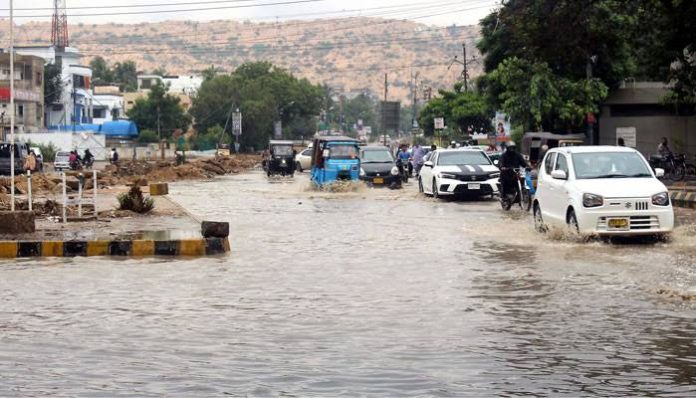The recent monsoon depression that caused heavy rain in Karachi has now weakened into a low-pressure system and moved toward Balochistan. This shift has reduced the chances of more heavy downpours in Karachi, though the city may still see light showers in the coming days.
Chief Meteorologist Amir Haider Laghari explained that while Karachi’s risk of severe rain has eased, coastal towns including Pasni, Ormara, Turbat, and nearby areas remain under the system’s influence. These regions are more likely to experience further rainfall as the system continues to move westward.
The rains provided much-needed relief from the heat, lowering Karachi’s temperature to 27.6°C. However, humidity levels stayed high, making the weather feel sticky. Different areas of the city saw varying amounts of rainfall.
DHA Phase 2 recorded the highest with 32.6 mm, while Surjani Town received a massive 149 mm in just 24 hours. The heavy showers created waterlogging in many parts of the city and added pressure to drainage systems.
At the same time, authorities are keeping a close eye on river conditions in Sindh. The Early Warning Centre has issued an alert about possible flooding near Guddu and Sukkur as the Indus River continues to swell with rainwater from upstream areas. Residents in low-lying regions close to the river have been advised to stay alert and follow safety instructions from local officials.
While the immediate risk of heavy rain in Karachi has eased, the wider impact of the monsoon system is still unfolding across Balochistan and Sindh.


